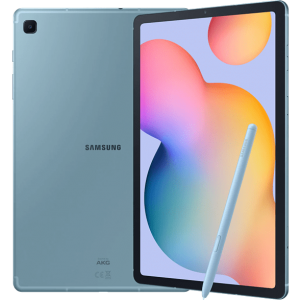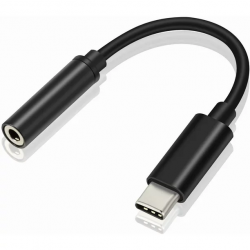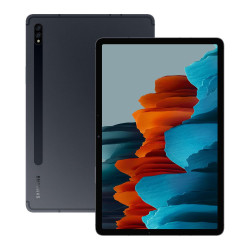In this guide, we walk through the steps to get GrapheneOS up and running on your de-googled device. This includes initial setup, app installation, migrating contacts and personal data, customizing the environment, and hardening for added privacy and security. GrapheneOS can appear a bit intimidating at first, especially with a solid black home screen and black-and-white icons. But never fear, this guide will help you become more familiar with your new operating system.
TIP: The GrapheneOS website is full of useful information. Please refer to their Usage Guide and FAQ for more information.
Guided Setup Video
Follow along in this guided video as Mat explains how to initialize and configure GrapheneOS. Video is based on an older version of GrapheneOS so defer to written instructions for latest setup.
Table of Contents
- Insert Sim Card
- Initial Power-on
- Pre-installed Apps
- App Repositories
- Essential Apps
- Personal Customization
- Install New Apps
- Harden Your Device
- Transfer Contacts and Personal Data
- Other Resources
Insert SIM Card
When migrating from an Android device, moving the SIM card to your de-googled phone and rebooting the device is all you have to do to begin using it. In some cases, your mobile carrier will request the IMEI number of the new phone. The IMEI number is found in Settings > About phone > IMEI
If this is your first time installing a SIM card, follow our tutorial for detailed instructions.
NOTE: If migrating from an iPhone, you will likely need to request a new SIM card from your mobile carrier.
TIP: Before inserting a SIM card into your degoogled device, see our article about how to remain anonymous while using a SIM card. For the ultimate privacy-focused phone service, check out JMP.chat. Our customers receive a phone number and one month of free service.
TIP: When a SIM card is installed for the first time, Access Point Names (APNs) will populate automatically into the device's settings, allowing mobile data and MMS texts to work properly. If mobile data is not working, contact your carrier to verify correct APNs.
Initial Power-on
When powering on the device for the first time, go through these steps
- Power On: Press and hold the power button on the side of the phone. You can safely ignore the message "Your device is loading a different operating system."
- Welcome: At the welcome screen, tap Next
- Connect to WiFi: If you are near a Wi-Fi network, toggle the button to enable Wi-Fi and select your WiFi network, entering the passphrase.
- Date and Time: Set your time zone and adjust current date and time if needed.
- Location services: We recommend giving apps permission to the device's location data. Optionally you may set up location data permissions within the individual app settings later.
- Turn on Cellular Data (if applicable): If you have a SIM card installed and are not connected to a Wi-Fi network, you will have the option of using cellular data to complete the setup process. As always, charges may apply.
- SIM card missing (if applicable): If you do not have a SIM card installed, you will get this screen with the option to install one at this point or setup ESIM.
- Face setup (if applicable): This is an optional step. To use your face to unlock your screen, you will need to add your face. Follow the on-screen instructions or tap Skip to go to the next step.
- Fingerprint setup (if applicable): This is an optional step. To use the fingerprint sensor to unlock the screen, you will need to provide your fingerprint. Follow the on-screen instructions or tap Skip to go to the next step.
- Set a PIN: Set up a PIN, password or pattern to unlock the screen. This is an optional step however it will prevent unauthorized access to your phone by another individual.
- Restore apps and data: If you have a backup from a previously used GrapheneOS phone, you can restore it at this step.
- Swipe to navigate your phone: For guided instruction about using gestures to navigate your device, follow the onscreen instructions. otherwise tap Skip to go to the next step.
- You're all set!: Leave the Disable OEM unlocking box checked (Pixel 5 and newer models). Then tap Start to complete initial setup.
Pre-installed Apps
TIP: If you are new to Android, swiping up on the screen with one finger will access the app drawer. All installed apps will be accessible in the app drawer.
GrapheneOS includes an excellent suite of pre-installed apps.
- App Store - This is the repository for managing apps developed by the GrapheneOS team
- Auditor - Used to perform device hardware verification with attestation services
- Calculator - Simple and straightforward open source calculator app
- Camera - This is the customized GrapheneOS camera app
- Clock - Standard open-source clock app
- Contacts - Open source contacts app
- Files - A simple file browser
- Gallery - Photo gallery that complements the camera app
- Info - Release notes, contact information, and ways to donate to the GrapheneOS project
- Messaging - The standard SMS/MMS messaging app
- PDF Viewer - A customized PDF viewer developed by GrapheneOS
- Phone Dialer - The standard open-source phone dialer app
- Settings - App used to configure system settings
- Vanadium - An open source web browser developed by the GrapheneOS team
App Repositories
NOTE: Use F-Droid and Aurora Store just like you would Apple Store or Google Play Store. Search for apps, download, and install. Both repositories will keep you aware of app updates as well.
F-Droid: F-Droid contains only free and open source apps. Applications can be browsed, downloaded and installed without the need to register an account.
Follow these steps to install F-Droid:
- Go to Settings app > Apps > Vanadium > Advanced > Install Unknown Apps > Allowed
- Open Vanadium
- Navigate to https://f-droid.org/, then tap the button to DOWNLOAD F-DROID, tap Download again to download the F-Droid.apk file to the default folder on your device
- A notification appears when the download is complete. Tap Open
- When asked Do you want to install this app?, leave the box checked next to Allow Network permission and tap Install
Aurora Store: Aurora Store is an unofficial free open-source software (FOSS) alternative to the Google Play Store. It provides anonymous access to apps on Google Play Store. Aurora Store does not require a Google account.
Follow these steps to install Aurora Store:
- Open F-Droid app
- Tap the magnifying glass icon in the bottom right corner to begin a search
- Type "Aurora Store" and select the app name (subtitle is "by Rahul Kumar Patel")
- Tap Install
- A notification may appear stating the phone isn't allowed to install unknown apps from this source. Tap Settings and enable Allow from this source
- If asked "Do you want to install this app?", leave the box checked next to "Allow Network permission" and tap Install
- Aurora Store will be downloaded and installed on your device
Now it's time to configure Aurora Store:
- While still in F-Droid, tap OPEN, or open Aurora Store from the app drawer
- At the Welcome screen, tap Next at the bottom
- At the Permissions screen, it is recommended to grant permissions to all options by tapping Grant next to each question
- When asked to grant permission for App links, keep In the app selected, then tap + Add link
- Check the box next to each link and tap Add. Press the back arrow
- Tap Finish
- At the Log in screen, select Anonymous
Essential Apps
Signal: At a minimum, we recommend installing Signal app for secure messaging with family and friends.
- Open Vanadium
- Navigate to https://signal.org/android/apk/
- Scroll down below "Danger Zone" for advanced users. Tap the blue Download button
- If asked where to download the file, leave the default location and tap Download
- If you receive a warning message that says "File might be harmful" or "downloading from this source could be dangerous", tap Download Anyway
- Once the file is downloaded, you should receive a message saying the download is complete. tap Open
- The Downloads folder opens in the Files app. Tap the name of the Signal apk file
- When asked "Do you want to install this app?", leave the box checked next to "Allow Network permission" and tap Install
- A message appears "App Installed", tap Open.
Personal Customization
Make GrapheneOS feel more like your phone with these recommended settings changes.
- Enable Adaptive brightness: Adaptive brightness may be disabled by default. To enable it, open Settings app > Display > Adaptive brightness > tap toggle button to enable
- Customize home screen: Select Settings app > Wallpaper & style to change home screen appearance; try enabling "use wallpaper colors"; download our favorite wallpapers at https://digitalprivacy.shop/wallpaper
- Add apps to home screen: From the app drawer, hold a finger down on an app icon; begin to drag the icon with your finger (the home screen will appear); drag the icon to the preferred location and release
- System navigation: Choose your preferred way to navigate the OS by going to Settings app > System > Gestures > Navigation mode
- Add widgets: Add a clock or other widget. Hold your finger on an empty area of the home screen; In the pop-up menu tap Widgets; Select desired widget
- Display settings: Go to Settings app > Display to adjust brightness, lock screen, screen timeout, theme, font size, auto-rotate, etc
Install New Apps
TIP: Before installing new apps from F-Droid, sandboxed Google Play Store, or Aurora Store, see our complete list of recommended apps.
Simple Rules to Follow...
- Use privacy-friendly apps: There are viable open-source privacy-friendly alternatives to the apps you have previously used.
- Stay away from Big Tech: Apps made by Google, Facebook, Microsoft, Apple and other Big Tech corporations should be avoided based on their standard practice of selling your personal data for profit and tracking everything you do.
- Install apps from these sources, in this order:
- F-Droid: The best place to find apps is on F-Droid, a repository that curates privacy-friendly open-source alternative apps.
- Aurora Store: If you cannot find a solution on F-Droid, the next step is to search Aurora Store, an open source app that connects to Google Play Store anonymously.
- Direct Download: Not all apps have to be installed using a repository. There are several excellent apps available for download directly from their developer's website.
- Sandboxed Google Play Store: If the app you installed complains about not being connected to Google Play Store, ask yourself "Do I honestly need this app?" If the answer is "No", delete it. If the answer is "Yes", you'll need to install the "Sandboxed" version of Google Play Store available in the "Apps" app. Read the instructions at https://grapheneos.org/usage#sandboxed-google-play for more detail.
- The less apps on your device, the better the privacy. Ask yourself, "Do I really need this app?". If there is a software program you can install on a PC or laptop instead, that is a better option.
- Instead of installing a company's app, access their website from a web browser; For quick access, use the browser's Add to Home screen feature to create an app icon.
Harden Your Device
Follow the steps below to enjoy the most private and secure experience on your device.
- Reduce App Dependency: The fewer apps on your phone, the more secure and private it will be. I challenge you to only install what you need. This will increase available storage space and reduce the potential for leaked data through random apps.
- Review App Permissions: Apps don't always need the permissions they request. Go to Settings > Apps & notifications > See All ## Apps. Then select each app and review permission settings. Change to Approve, Deny, or Ask Every Time as necessary.
- Install a Firewall: Install a firewall like NetGuard from F-Droid to restrict network access on a per-app basis. Once installed, scan through the list of apps and decide whether to restrict network communication. Be cautious of restricting system apps that appear in the list.
- Setup Multiple User Profiles: If you must install proprietary (closed source) apps that are questionable in terms of privacy (i.e. for your job), create a "Work" profile and isolate them from your personal data. Learn more.
- Activate Private DNS: Why is DNS important? Learn more. Go to Settings > Network & Internet > Advanced > Private DNS. Select Private DNS provider hostname and enter base.dns.mullvad.net. Or follow our guide to select a specific DNS resolver of your choice.
- Install a VPN: A virtual private network encrypts the data being sent from your device by tunneling to a VPN server, effectively cloaking your data and preventing ISP interception. Additionally, to the downstream recipient, your device's location will appear to be the location of the VPN server. This feature is extremely useful when accessing websites that restrict access from specific countries. For a no-cost alternative that uses the TOR network, I recommend Orbot, available on F-Droid by enabling "Guardian Project" repository. There are also three free VPN services available on F-Droid: the CalyxVPN, RiseUpVPN, or ProtonVPN. However paid VPNs offer more features and higher speeds.
- Regularly Disable Network Transmission: Get in the habit of disabling Location, NFC, Wi-Fi, Bluetooth, Camera, and Microphone when not in use. You can easily disable them by swiping down from the top of your home screen to access the Quick Settings tiles. For added security, place the device in a Faraday bag when not in use.
Transfer Contacts and Personal Data
If you are coming from an iPhone and want to migrate your contacts, photos, and other personal data, follow the guide Transferring Personal Data from iPhone. Or if you are coming from an Android device, follow the guide Transferring Personal Data from Android.Other Resources
The GrapheneOS website is full of useful information. Please refer to their Usage Guide and FAQ for more information.
De-register iMessages
If you are migrating from an Apple iPhone to an Android, you'll need to de-register iMessages in order to get text messages from other iPhone users. Go to Apple's "Deregister iMessages" webpage and follow the instructions.

























